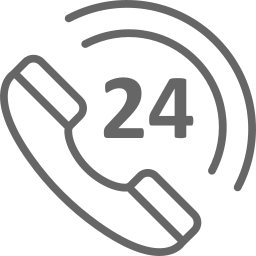This study investigate the relationship of personal behaviour that is Neuroticism, openness and conscientious with the accuracy change detection. The study have used spss version 22 to do the analysis. The study investigate in general the relationship of personality traits and accuracy in change detection. The study found that neurotic does not have any significant relationship with accuracy change detection. The study has also found that the openness of individuals have a positive significant relationship with accuracy change detection. Finally, the study found that conscientiousness of the individual have a negative relationship with accuracy change detection of the individuals.
Key words: openness, Neurotics, conscientiousness, change detection, accuracy
Relationship of personality traits with accuracy in change detection
Humans must process the visual world in a meaningful way for effective behaviour and one way the brain does this is via the cognitive mechanism of visual attention. Visual attention is like a spotlight which allows us to focus our processing on a small area of the visual world at a time (e.g., Posner et al.,1980). For example, when watching videos on YouTube, one might focus their spotlight of attention on the video player and ignore push notifications coming from an email inbox. Likewise, one might use the spotlight to focus vision on the text on a page, or on the road in front of them while driving (Ball et al., 1993; Facoetti et al., 2003). Given that the spotlight is important for several daily tasks, it is important to understand factors which influence its operation. Indeed, past research indicates that there is individual variation in the size of the attention spotlight for different people (Figure 1). First, some work suggests that older adults tend to have a smaller attention spotlight compared to younger adults (Lawrence et al., 2018). Second, basketball and soccer experts may have a larger spotlight of attention compared to novices (Hüttermann et al., 2014). Finally, and of interest to the current study, some have observed a relationship between personality and attention spotlight size (e.g., Wilson et al., 2016). Here, personality can be thought of as “the enduring patterns of thought, feeling, motivation and behaviour expressed in different circumstances” (Burton et al., 2019, p. 707). The overall aim of the study is to further explore the relationship between personality and spotlight size.
Figure 1. A hypothetical example of a small attention spotlight (left) versus a large (right) attention spotlight.
Wilson and colleagues (2016) recently conducted a study exploring personality and spotlight size using a cueing task and found that conscientiousness and openness were associated with attention. According to the five-factor model (e.g., Costa & McCrae, 1992a), openness relates to the degree to which someone is “imaginative… intellectually curious, behaviourally flexible, and nondogmatic in their attitudes” (Costa & McCrae, 1992b, p.6), whereas conscientiousness relates to the degree to which someone is “well-organized, and diligent” (Costa & McCrae, 1992b, p.6). Interestingly, increased levels of openness were related to a large attention spotlight whereas increased levels of conscientiousness were related to a small attention spotlight, together suggesting that personality and attention are linked.
However, Wilson and colleagues (2016) only explored the relationship between personality and spotlight size using one measure: a cueing task. The use of a single task to measure the attention spotlight size is crucial to note as several different measures of spotlight size can be used (Goodhew, 2020). Indeed, it is important to test whether the relationship between personality and the spotlight holds using other measures. One such measure is a change detection task which has previously been used to study cultural differences in the spotlight (Boduroglu et al., 2009). An example of a trial in a change detection task like that used by Boduroglu and colleagues is shown in Figure 2. On each trial of the task, participants are first shown four coloured boxes located near the centre of a black computer screen. After a period of 200ms, four new boxes appear that are further away from the centre of the screen. Three of the boxes are the same colour as those shown earlier, but one box changes colour. For example, Figure 2, the yellow box changes colour to be green. The task of the participants is to click on the box that has changed colour and accuracy is measured (i.e., correctly identify the colour change). Overall, the assumption is that higher levels of accuracy across repeated trials in this task reflect a larger attention spotlight. This is because someone who has a large attention spotlight would be better able to see boxes located further away from the centre of the screen and accurately detect a color change (Figure 3).

Figure 2. Example of a change detection trial that measures spotlight size. Here, participants must identify which square has changed color across a trial.
Figure 3. Example of a small (left) versus large (right) spotlight of attention during the change detection task. As shown, a large spotlight would improve accuracy in the task as all boxes would fall within the spotlight and be processed by the participant.
Apart from exploring conscientiousness and openness using an alternate measure such as the change detection task, it is also important to consider how other personality traits might relate to spotlight size more broadly. For example, the personality trait of neuroticism has been associated with negative emotion (e.g., McCrae & Costa, 1991), and different emotions have been associated with a spotlight size (e.g., Rowe et al., 2007). It is therefore possible that neuroticism might also be related to spotlight size in a task like the change detection task.
As such, we aimed to test if personality and spotlight size are related using the change detection task. Specifically, the personality traits openness, conscientiousness, and neuroticism will be measured and correlated with accuracy in the change detection task, with better performance inferring a bigger spotlight of attention.
Hypothesis: H0: There is no significant relationship between conscientiousness scores and accuracy in the change detection task
Participants for this study were recruited by convenience sampling from the general public. All provided voluntary informed consent and were provided with $5 AUD for participating in the research.
Participants were tested individually using a desktop computer with a standard keyboard and mouse in a well-lit room. An LCD monitor that was a 1280x1024 pixels resolution, and 58cm by 30cm was placed 40cm away from the participant. The materials were programmed and presented using the PsychoPy software package for psychology experiments (Pierce et al., 2019).
Demographic and Personality Questionnaire
The demographic and personality questionnaire asked participants to self-report their age, gender, handedness, and vision status. The survey also included 30 items to measure Conscientiousness, Openness, and Neuroticism. The items were taken from the IPIP-120 (Johnson, 2014), and there were ten for each personality trait. Each item was a statement (e.g., “have a vivid imagination”) and participants reported how accurate each statement was in relation to themselves on a scale from 1-7 (1 = very inaccurate, 7 = very accurate). Scores on the items for each trait were added together to determine an overall score for each trait (between 10 and 70), with greater scores reflecting a higher level of openness, conscientiousness, and neuroticism.
Change detection task
The attention spotlight of each participant was measured using a change detection task based on Boduroglu and colleagues (2009). In this task, stimuli are shown on a black screen and participants complete several trials to measure attention. At the start of a given trial, participants see a white cross .5cm in height that is shown in the centre of the screen for 500ms. After this, four coloured boxes appear around the white cross for 200ms. The boxes were 1cm in size, and each appeared in separate quadrants of the computer screen, around 2cm away diagonally from the white cross. The colour of the boxes was randomly chosen on each trial without replacement from the following possible colours: red, blue, orange, purple, green, yellow, pink of brown. Finally, the four boxes appear on the screen again (one in each quadrant) but appear further away from the central cross (around 6cm away diagonally). Three of the boxes are the same colour as they were earlier in the trial, but one boxes changes colour (e.g., from yellow to green). The box that changed colour is randomly selected on each trial. The participant's task was to indicate which box changed colour by moving the mouse towards their chosen box and clicking on it. Overall, participants completed 20 practice trials to and then 200 experimental trials (50 trials for each square location). The accuracy of participants to select the correct box in the task was recorded, with a higher accuracy score across experimental trials indicating a larger spotlight.
First, participants provided informed consent. Next, they completed the online demographics and personality questionnaire. Finally, the participants completed the change detection task and were then debriefed about the aims of the study. The study took each participant around 30 minutes to complete.
The study will use both the descriptive statistics and the inferential statistics. The descriptive statistics will include mean, standard deviations, skewness and coefficient of kurtosis. The inferential statistics will include the correlation coefficient
This study used SPSS software to conduct analysis. The study used the descriptive statistics to describe the variables and also the inferential statistics like correlation coefficient to make an inference about the hypothesis
|
N |
Minimum |
Maximum |
Mean |
Std. Deviation |
|||||
|
Statistic |
Statistic |
Statistic |
Statistic |
Statistic |
Statistic |
Std. Error |
Statistic |
Std. Error |
|
|
Openness |
60 |
20 |
70 |
35.55 |
11.142 |
.698 |
.309 |
.132 |
.608 |
|
Conscientiousness |
60 |
18 |
64 |
34.53 |
11.999 |
.889 |
.309 |
.010 |
.608 |
|
Neuroticism |
60 |
11 |
70 |
51.33 |
16.153 |
-.828 |
.309 |
-.164 |
.608 |
|
Change Detection Accuracy |
60 |
50 |
99 |
84.82 |
9.516 |
-.581 |
.309 |
1.494 |
.608 |
|
Valid N (listwise) |
60 |
From the results, it can be observed that the openness had a mean of 35.55, with a standard deviation of 11.142. The results also indicate that the value of coefficient of skewness was 0.698 which indicate that the data is not skewed. The coefficient of kurtosis was 0.132 which indicate that the openness scores is not highly peaked. The results also indicate that conscientiousness has a mean= 34.53, std=11.999, coefficient of skewness=0.889, and coefficient of kurtosis was 0.01. This indicate that the conscientiousness scores were not skewed or high peaked. The results also indicate that neuroticism score has a mean= 51.33, std=16.153, coefficient of skewness=0.-0.828, and coefficient of kurtosis was -0.164. This indicate that the neuroticism scores were not skewed or high peaked. The results also indicate that change detection score has a mean= 84.82, std=9.516, coefficient of skewness=-0.581, and coefficient of kurtosis was 1.494. this indicate that the change detection scores were not skewed or high peaked.
To determine if there is significant relationship between the neurotism scores and accuracy change detection. To investigate the above objective, a correlation analysis was conducted and the scatterplot was also obtained to obtain the graphical representation.
|
Correlations |
|||
|
Change Detection Accuracy |
Neuroticism |
||
|
Change Detection Accuracy |
Pearson Correlation |
1 |
.001 |
|
Sig. (2-tailed) |
.994 |
||
|
N |
60 |
60 |
|
|
Neuroticism |
Pearson Correlation |
.001 |
1 |
|
Sig. (2-tailed) |
.994 |
||
|
N |
60 |
60 |
|
From correlation analysis, it was observed that the coefficient of pearson correlation was 0.001 with ap-value = 0.994 which was greater than 0.05 significant level. This means that there was no significant relationship between the change detection accuracy and the neuroticism.

The scatterplot indicate that the data does not show any relationship between change detection accuracy and neuroticism.
To determine the relationship between openness score and accuracy change detection.
To investigate the relationship between openness score and accuracy change detection indicate that the value of Pearson correlation coefficient was 0.461 with a P-value = 0.000< 0.05 significant level. This means that there is sufficient evidence to conclude that openness score influences the change detection accuracy.
|
Correlations |
|||
|
Change Detection Accuracy |
Openness |
||
|
Change Detection Accuracy |
Pearson Correlation |
1 |
.461** |
|
Sig. (2-tailed) |
.000 |
||
|
N |
60 |
60 |
|
|
Openness |
Pearson Correlation |
.461** |
1 |
|
Sig. (2-tailed) |
.000 |
||
|
N |
60 |
60 |
|
|
**. Correlation is significant at the 0.01 level (2-tailed). |
|||
From the results of the scatterplot below, it can be observed that there is a positive relationship between the openness and the change detection accuracy.

To determine the relationship between the conscientious score and the change detection accuracy.
From the results, it can be observed that the Pearson correlation coefficient was -0.326 wit a p-value = 0.011< 0.05 significant level. This means that there is sufficient evidence that there is significant relationship between conscientious score and change detection accuracy.
|
Correlations |
|||
|
Change Detection Accuracy |
Conscientiousness |
||
|
Change Detection Accuracy |
Pearson Correlation |
1 |
-.326* |
|
Sig. (2-tailed) |
.011 |
||
|
N |
60 |
60 |
|
|
Conscientiousness |
Pearson Correlation |
-.326* |
1 |
|
Sig. (2-tailed) |
.011 |
||
|
N |
60 |
60 |
|
|
*. Correlation is significant at the 0.05 level (2-tailed). |
|||
From the scatterplot, it can be observed that the relationship between conscientiousness score and change detection accuracy was negative
From the study it was found that openness and accuracy change detection had a significant relationship. This was in agreement with other studies by other researchers. The use of a single task to measure the attention spotlight size is crucial to note as there are several different measures of spotlight size that can be used (Goodhew, 2020). Indeed, it is important to test whether the relationship between personality and the spotlight holds using other measures. One such measure is a change detection task which has previously been used to study cultural differences in the spotlight (Boduroglu et al., 2009).
The study also found that conscientiousness and accuracy change detection have a significant relation this was in agreement with other studies that past research indicates that there is individual variation in the size of the attention spotlight for different people. First, some work suggests that older adults tend to have a smaller attention spotlight compared to younger adults (Lawrence et al., 2018). Second, basketball and soccer experts may have a larger spotlight of attention compared to novices (Hüttermann et al., 2014).
In summary this study found that neurotic and accuracy change detection had no significant relationship. The study also found that the openness and conscientiousness had a significant relationship with accuracy change detection
Ball, K., Owsley, C., Sloane, M. E., Roenker, D. L., & Bruni, J. R. (1993). Visual attention problems as a predictor of vehicle crashes in older drivers. Investigative Ophthalmology & Visual Science, 34(11), 3110-3123. Retrieved from: https://iovs.arvojournals.org/article.aspx?articleid=2160828
Boduroglu, A., Shah, P., & Nisbett, R. E. (2009). Cultural differences in allocation of attention in visual information processing. Journal of Cross-Cultural Psychology, 40(3), 349–360. https://doi.org/10.1177/0022022108331005
Costa, P. T., & McCrae, R. R. (1992a). Four ways five factors are basic. Personality and Individual Differences, 13(6), 653–665. https://doi.org/10.1016/0191-8869(92)90236-I
Costa, P. T., & McCrae, R. R. (1992b). Normal personality assessment in clinical practice: The NEO Personality Inventory. Psychological Assessment, 4(1), 5–13. https://doi.org/10.1037/1040-3590.4.1.5
Facoetti, A., & Molteni, M. (2001). The gradient of visual attention in developmental dyslexia. Neuropsychologia, 39(4), 352–357. https://doi.org/10.1016/S0028-3932(00)00138-X
Goodhew, S. C. (2020). The breadth of visual attention. Cambridge University Press.
Hüttermann, S., Memmert, D., & Simons, D. J. (2014). The size and shape of the attentional “spotlight” varies with differences in sports expertise. Journal of Experimental Psychology: Applied, 20(2), 147–157. https://doi.org/10.1037/xap0000012
Johnson, J. A. (2014). Measuring thirty facets of the five factor model with a 120-item public domain inventory: Development of the IPIP-NEO-120. Journal of Research in Personality, 51, 78–89. https://doi.org/10.1016/j.jrp.2014.05.003
Lawrence, R. K., Edwards, M., & Goodhew, S. C. (2018). Changes in the spatial spread of attention with ageing. Acta Psychologica, 188, 188-199. https://doi.org/10.1016/j.actpsy.2018.06.009
Posner, M. I., Snyder, C. R., & Davidson, B. J. (1980). Attention and the detection of signals. Journal of Experimental Psychology: General, 109(2), 160–174. https://doi.org/10.1037/0096-3445.109.2.160
Rowe, G., Hirsh, J. B., & Anderson, A. K. (2007). Positive affect increases the breadth of attentional selection. Proceedings of the National Academy of Sciences, 104(1), 383-388. https://doi.org/ 10.1073/pnas.0605198104
Swift, V., Wilson, K. E., & Peterson, J. B. (2020). Zooming in on the attentional foundations of the Big Five. Personality and Individual Differences, 164, Article 110000. https://doi.org/10.1016/j.paid.2020.110000
Wilson, K. E., Lowe, M. X., Ruppel, J., Pratt, J., & Ferber, S. (2016). The scope of no return: Openness predicts the spatial distribution of Inhibition of Return. Attention, Perception, & Psychophysics, 78(1), 209–217. https://doi.org/10.3758/s13414-015-0991-5
XX ADD ANY EXTRA REFERENCES HERE XX
XX APPENDIX OF SPSS OUTPUT GOES HERE XX
You must provide a copy of the statistical output you produced for your statistical analysis.
You Might Also Like:-
Health Care Strategies Assignment Sample
How to Write a Psychology Assignment?
Psychology Assignment Help in Australia

Get 24x7 instant assistance whenever you need.

Get affordable prices for your every assignment.

Assure you to deliver the assignment before the deadline

Get Plagiarism and AI content free Assignment

Get direct communication with experts immediately.
Secure Your Assignments
Just $10
Pay the rest on delivery*

It's Time To Find The Right Expert to Prepare Your Assignment!
Do not let assignment submission deadlines stress you out. Explore our professional assignment writing services with competitive rates today!
Secure Your Assignment!